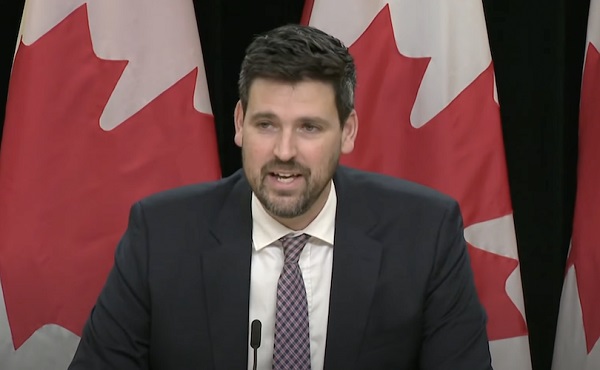Alberta
The Queens are crowned ACAC Champions for the first time in program history

Raymond, October 30 – After the final whistle was blown, history was made at the ACAC Women’s Soccer Championships. The Queens stormed the field off the bench to go celebrate with their teammates as they take home the gold and go off to nationals for the first time in program history.
As the Red Deer Polytechnic Queens soccer program entered the gold medal match of the Alberta Colleges Athletic Conference (ACAC) Soccer Championships, they were looking for their first championship in program history. In order to so, they had to get through the Concordia University Thunder in Sunday’s matchup in Raymond.
The Thunder are fourth in the Canadian Collegiate Athletic Association (CCAA) rankings and were ranked number one in the ACAC North Division at the end of the regular season with an 11-1-0 record. For the Queens, they finished off the season in first in the South Division with the same win-loss record and placed 12th in the nation in the final rankings before the championship.
Going into this match, the Queens have yet to concede the first goal all season and have not trailed since the 56th minute in their season opener against the SAIT Trojans way back on September 10.
The polytechnic does not have history on their side. In the last 15 seasons, a North Division team has won the ACAC Championship 13 times. SAIT (2021-2022) and Mount Royal College (2007-2008) in Calgary, now known as Mount Royal University, are the only teams who have won from the South Division in that time frame.
It was a usual southern Alberta October day with the wind blowing hard from the west. This made it difficult for the Queens and Thunder to play, especially on a pitch they are not so familiar with. The ball was rolling all over the place and each team had troubles with distributing the ball to their teammates.
Through the first 15 minutes, not much was going for either team as they were stuck playing in the middle third of the field with hardly any offensive zone time or any goal opportunities. It was the typical championship match the teams and spectators would expect which is a very physical and defensive game.
Queens Captain Alisha Coules (Bachelor of Science Nursing) was sent on a breakaway near the 20th minute, but she was just a step offside and forced to give it back to the Thunder for a free kick.
The biggest chance for the Thunder to open the scoring came at the 33rd minute mark. The ball was sent in from half and made it through the Queens back line. Third-year midfielder Brooke Lesoway struck the ball with one touch, but a sliding Queens keeper Abby Kotyk (Bachelor of Kinesiology) kept the ball out of her net as she stacked the pads.
At the half, it was all tied up at zero with each team minimalizing the goal opportunities for the opposing side and making it difficult for one another.

Queens Captain #9, Alisha Coules
During the half-time break, Head Coach Mazhiar Peyrow substituted Jenica Swartz for the ACAC South Player of the Year Sein Furuyama. 24 hours ago, Swartz ran in the 6 km race at the ACAC Cross-Country Championship in Edmonton where she would take home the bronze medal in the women’s division. With this, Swartz was not available for the Queens semi-final match yesterday against the Lethbridge College Kodiaks.
Furuyama was later substituted back into the match in the 75th minute for first-year midfielder Paige Kalbfleisch (Bachelor of Science Nursing).
The dead lock tie finally was broken in the 64th minute with the Queens striking first. It was some great pressure by Coules challenging the ball that was sent back to the Thunder keeper Monica Dickson that led to the goal. The captain from the Queens did not give up on the ball. She was able to sneak it through the keeper and it would slowly roll to the back of the net.
Coules was pressuring the opposing team and not giving them any time on the ball all game which finally paid off for her with a goal.
Moments later, the Queens would send in a ball into the Thunders box where Coules and Dickson collided hard with each other, leaving the Concordia keeper on the ground in pain for a few minutes.
A huge concern for the Queens as Furuyama went down hard and awkwardly bending her left leg back. It looked like a knee injury, and she was in a lot of pain, but she was able to walk off with the help of the trainers.
In stoppage time, a Thunder player went in for a tackle against Queens striker Corbynn Fujimoto and would hit her head on the turf with an incredible amount of force, leaving her still on the ground. The trainers would help her as much as they could and kept her head still. She needed immediate medical attention and an ambulance was called to stretcher the player off the field.
With these couple of injuries and having to wait for an ambulance, the game was delayed quite awhile before it would resume.
After the match finally restarted, Swartz and the Queens had the opportunity to put the Thunder down 2-0 in the late stages of the second half. The tall-striker from Red Deer was sent on a breakaway but could not shot it past the Thunder keeper as she stood tall in her net and made a sliding save.
Not as much time was added on as some of the players were expecting and the Queens came away with the gold medal and will await nationals in a couple weeks.
The player of the game went to Sofia Quinteros for her outstanding effort in the midfield, shutting down the Thunders offence but also contributing to her own team’s offensive effort.
At the end of the match Alisha Coules, Sein Furuyama, Kayla Yeo, and Estel Quinteros were named to the All-Tournament team. Midfielder Sofia Quinteros was named the Most Outstanding Player of the Tournament.
The CCAA Soccer Championships will be hosted by Champlain College Saint-Lambert in Quebec on November 9-12 at Seaway Park 3. But the teams will be arriving in the province on Monday, November 7.
Red Deer Polytechnic and the Athletics department congratulate the Queens on this gold medal and wish them luck in Quebec at nationals.
Alberta
Federal taxes increasing for Albertans in 2025: Report

From the Canadian Taxpayers Federation
By Kris Sims
The Canadian Taxpayers Federation released its annual New Year’s Tax Changes report today to highlight major tax changes in 2025.
The key provincial tax change expected for Alberta is a reduction in the income tax rate.
“The Alberta government promised to reduce our lowest income tax bracket from 10 down to eight per cent and we expect the government to keep that promise in the new year,” said Kris Sims, CTF Alberta Director. “The United Conservatives said this provincial income tax cut would save families about $1,500 each and Alberta families need that kind of tax relief right now.
“Premier Danielle Smith promised to cut taxes and Albertans expect her to deliver.”
Albertans will see several federal tax hikes coming from Ottawa in 2025.
Payroll taxes: The federal government is raising the mandatory Canada Pension Plan and Employment Insurance contributions in 2025. These payroll tax increases will cost a worker up to an additional $403 next year.
Federal payroll taxes (CPP and EI tax) will cost a worker making $81,200 or more $5,507 in 2025. Their employer will also be forced to pay $5,938.
Carbon tax: The federal carbon tax is increasing to about 21 cents per litre of gasoline, 25 cents per litre of diesel and 18 cents per cubic metre of natural gas on April 1. The carbon tax will cost the average household between $133 and $477 in 2025-26, even after the rebates, according to the Parliamentary Budget Officer.
Alcohol taxes: Federal alcohol taxes will increase by two per cent on April 1. This alcohol tax hike will cost taxpayers $40.9 million in 2025-26, according to Beer Canada.
Following Budget 2024, the federal government also increased capital gains taxes and imposed a digital services tax and an online streaming tax.
Temporary Sales Tax Holiday: The federal government announced a two month sales tax holiday on certain items like pre-made groceries, children’s clothing, drinks and snacks. The holiday will last until Feb. 15, 2025, and could save taxpayers $2.7 billion.
“In 2025, the Trudeau government will yet again take more money out of Canadians’ pockets with payroll tax hikes and will make life more expensive by raising carbon taxes and alcohol taxes,” said Franco Terrazzano, CTF Federal Director. “Prime Minister Justin Trudeau should drop his plans to take more money out of Canadians’ pockets and deliver serious tax relief.”
You can find the CTF’s New Year’s Tax Changes report HERE.
Alberta
Fraser Institute: Time to fix health care in Alberta

From the Fraser Institute
By Bacchus Barua and Tegan Hill
Shortly after Danielle Smith was sworn in as premier, she warned Albertans that it would “be a bit bumpy for the next 90 days” on the road to health-care reform. Now, more than two years into her premiership, the province’s health-care system remains in shambles.
According to a new report, this year patients in Alberta faced a median wait of 38.4 weeks between seeing a general practitioner and receiving medically necessary treatment. That’s more than eight weeks longer than the Canadian average (30.0 weeks) and more than triple the 10.5 weeks Albertans waited in 1993 when the Fraser Institute first published nationwide estimates.
In fact, since Premier Smith took office in 2022, wait times have actually increased 15.3 per cent.
To be fair, Premier Smith has made good on her commitment to expand collaboration with the private sector for the delivery of some public surgeries, and focused spending in critical areas such as emergency services and increased staffing. She also divided Alberta Health Services, arguing it currently operates as a monopoly and monopolies don’t face the consequences when delivering poor service.
While the impact of these reforms remain largely unknown, one thing is clear: the province requires immediate and bold health-care reforms based on proven lessons from other countries (e.g. Australia and the Netherlands) and other provinces (e.g. Saskatchewan and Quebec).
These reforms include a rapid expansion of contracts with private clinics to deliver more publicly funded services. The premier should also consider a central referral system to connect patients to physicians with the shortest wait time in their area in public or private clinics (while patients retain the right to wait longer for the physician of their choice). This could be integrated into the province’s Connect Care system for electronic patient records.
Saskatchewan did just this in the early 2010s and moved from the longest wait times in Canada to the second shortest in just four years. (Since then, wait times have crept back up with little to no expansion in the contracts with private clinics, which was so successful in the past. This highlights a key lesson for Alberta—these reforms are only a first step.)
Premier Smith should also change the way hospitals are paid to encourage more care and a more patient-focused approach. Why?
Because Alberta still generally follows an outdated approach to hospital funding where hospitals receive a pre-set budget annually. As a result, patients are seen as “costs” that eat into the hospital budget, and hospitals are not financially incentivized to treat more patients or provide more rapid access to care (in fact, doing so drains the budget more rapidly). By contrast, more successful universal health-care countries around the world pay hospitals for the services they provide. In other words, by making treatment the source of hospital revenue, hospitals provide more care more rapidly to patients and improve the quality of services overall. Quebec is already moving in this direction, with other provinces also experimenting.
The promise of a “new day” for health care in Alberta is increasingly looking like a pipe dream, but there’s still time to meaningfully improve health care for Albertans. To finally provide relief for patients and their families, Premier Smith should increase private-sector collaboration, create a central referral system, and change the way hospitals are funded.
-

 Housing2 days ago
Housing2 days agoTrudeau loses another cabinet member as Housing Minister Sean Fraser resigns
-

 conflict2 days ago
conflict2 days agoTrump has started negotiations to end the war in Ukraine
-

 Economy2 days ago
Economy2 days agoThe White Pill: Big Government Can Be Defeated (Just Ask the Soviet Union)
-

 Business2 days ago
Business2 days agoFiscal update reveals extent of federal government mismanagement
-

 National2 days ago
National2 days agoAs Trudeau’s government teeters, Pierre Poilievre pushes for immediate election call
-

 Brownstone Institute1 day ago
Brownstone Institute1 day agoA Potpourri of the World’s Unexposed Scandals
-

 conflict2 days ago
conflict2 days agoTrump’s election victory shows the American people want peace in Ukraine
-

 COVID-191 day ago
COVID-191 day agoEsteemed UK Doctor pleads with governments to cancel COVID-19 vaccines








